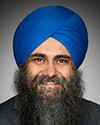Yes. I have two quick comments.
The reason it isn't established like the peanut allergy is because it's currently unethical to conduct scientific experiments on children. As long as that remains, it will never--read “never”--be established, okay? So that's a ridiculous standard to hold us to.
I'll give you another ridiculous standard that just came out of the mouth of Beth Pieterson: “no consistent evidence to date”. Let's edit that. I'm not a scientist, but I was a journalist for 20 years in this country. I would edit that. I would take out the words “consistent evidence” and then the word “no” doesn't apply. You have to take out “no consistent”, so there is evidence that this causes harm.
They're throwing in what journalists so affectionately call weasel words when we hear from our bureaucrats and politicians. It's plausible deniability, so that when children start getting sick in bigger cities like Toronto, Ottawa, or London, Health Canada can say, “Well, there was no consistent evidence to date”. There is no consistent evidence by this standard that smoking for 40 years causes lung cancer, because only 30% of the people get lung cancer. so for that other 70% of the people, there's no consistent evidence.
So they're raising the bar, raising the bar, raising the bar.... If they get sick, well, it's only these kids. If it's more schools, it's only those schools, well, we want doctor's notes now....



